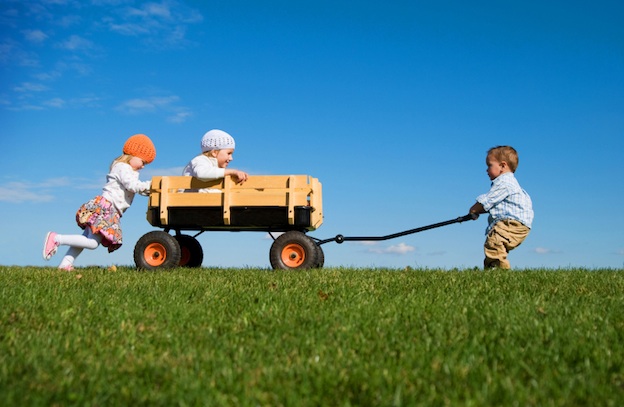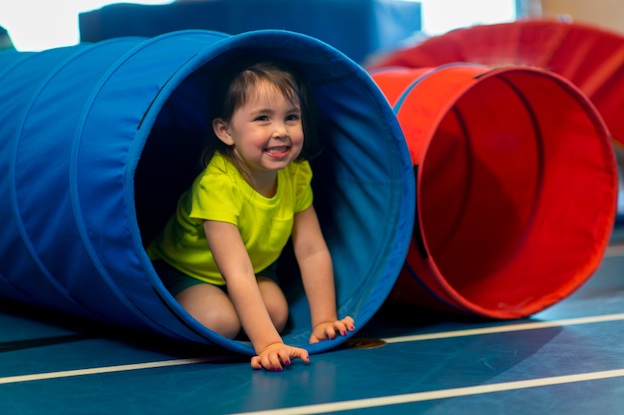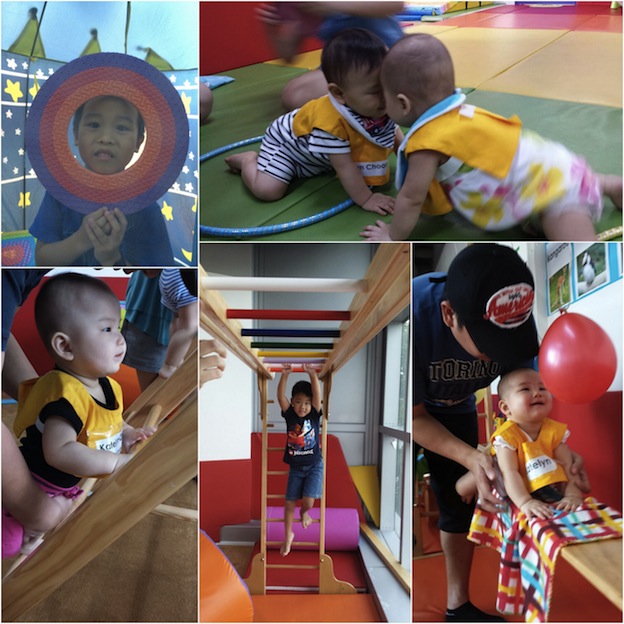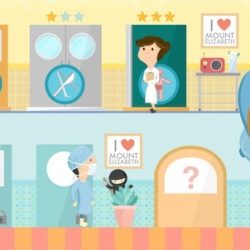SingaporeMotherhood | Parenting
November 2014
Get Moving, Build Brains!

“The first five years of a child’s life are the most important for brain development.” How many times have you heard this? Too many? Well that’s because it’s true. SingaporeMotherhood meets with Dr Jane Williams, director of research and education at KindyROO, to find out how getting active can help your child learn better.
KindyROO concentrates on children from six weeks to five years of age. Why?
Brain development is enormous in the first five years of life. It’s the time of our lives when our brains are wiring up. What we use, we keep in our brains. What we don’t use, we lose. It doesn’t mean that we can’t utilise different skills as we grow older, it’s just a lot easier to put into place all the really important pathways from the age of six weeks through to five years, because the brain is at the most receptive to input during this time.
[banner][/banner]
And movement is key to brain building during this time?
The brain starts off with these little pathways where a little bit of the message gets through. It’s like a suburban street becoming an international highway. What we want is for those neuro pathways to become superhighways of information and the only way we can do that is through repeated activities. The only other way we can do that is by having a structured foundation so an activity that is initially complex becomes increasingly easy once we practise it. Then the next difficult activity can be tried, and as it is practiced, and becomes easy, you move on to the next one.
Through evolution our brain has developed in response to the types of movements that we do. According to evolutionary biologists and anthropologists, the reason that we function at such a high thinking level is because of the types of movements that we do in comparison with other animals.
For instance, we walk upright against gravity, which in itself is quite a challenge. Not many other animals do that. Even apes have to go down onto all fours. We’ve also had to do a a lot more fine motor work, from foraging for plants to manipulating tools. These have all have had a big impact on how our brains have developed, have enhanced our thinking and cognitive capabilities.
We are also very social animals and that’s a very important part of our higher thinking levels. To socialise, we need to move. We touch people, we create eye contact, we use our eyes, we verbalise. So motor movement is a very important key because it enables us to use all our senses.
But in the first 12 weeks of life most parents are stuggling. They’re just trying to manage a new baby!
That’s true. One of the key messages that we need to encourage is that movement is just as important as feeding your child and loving your child. Love, care and affection are important because when we do that our brain is washed with the right sort of hormones that helps us develop our emotional state, and also helps the rest of our brain function well. But we also need to think about our babies’ opportunities to move. With little babies it’s as simple as gving them some tummy time and some freedom to move by not swaddling them up all the time, by keeping their toes bare, and giving them an opportunity to wriggle and squirm.
What do the kids do on the equipment?
The equipment that we have is specially designed for children from the age of one through to five years. It enables them to use their bodies in different ways over and over again. Part of what’s important in brain development is that they have opportunities to repeat actions, because just like adults, you never learn something just by doing it once. You have to do it over and over again, and the brain needs that as well.

Our one-year-olds are still using their bodies equally, both sides, together. They’re bobbing up and down, and they’re starting to jump with two feet together, off the ground. They’re climbers, so a lot of our equipment is designed to help them learn to balance. They love climbing and as everybody knows, toddlers never stop. But that’s because the brain says ‘I need to move! To learn about the world around me! To get my body under control! I need lots of practice!’ And everybody says, ‘Oh, my toddler is hyperactive.’ But no they’re not. Their brain is saying ‘I need to move!’
Our equipment gives children all that: to climb, to balance, to roll, and swing and tumble. One of the important things about the brain is the part we call the cerebellum. The motor messages from the body go through the cerebellum to the higher parts of the brain, the motor cortex – and then the brain responds to the body. Once the child has learnt a skill, the message goes straight to the motor cortex. It becomes automatic.
How does all that lead to brain boosting abilities?
When your body is well controlled, your brain can do everything automatically, from standing up to skipping, cross-pattern skipping and marching and so on. The brain says ‘Right, I’ve got the basics, I can now relax, and I can think on a higher level. I can concentrate because I don’t have to worry about whether I can sit still in my chair, whether I can write or do what the teacher asks me to do. I can attend to the tasks of the classroom. I can do the jobs that the teacher assigns to me, write with my right hand and hold the paper with my left and vice versa. I can cut with scissors. I can achieve all the motor tasks that I need in the classroom.’

Vision is a motor task. The brain says ‘I can read what the teacher’s written on the board, and I can look down and I can write my answer. I can follow instructions because that’s a sequence. If I don’t have good motor skills then I can’t actually understand what a sequence is, because I learn sequencing as part of my motor development.’
Motor development skills give us all the tools that we need to be ready for the classroom. We don’t actually have to teach children the ABCs if we have their motor development in place. They learn to read and write without having to think about it. They love learning in the classroom.
How is KindyROO different from the other gym-based play programmes?
Our programme is based on neurological development of the brain. It’s not just a playgroup. It’s not just somewhere children come to play. We do age-appropriate and neuro-developmentally appropriate activities for every age group.
We let parents know how we are helping their child’s development, why every activity that we do is important, and we encourage parents to do it at home. That’s a real key to what we do. We’re not hot-housing our babies. We’re asking parents to just make sure they go through the neuro-developmental stages.
We know from our research that this makes a big difference. Children who have been through our programme should be in the top 30 per cent of their class.
We often get letters from parents to tell us how well their children are doing in school, how easy it was for them to learn. We have done some research with children who are already at school. We implemented the KindyROO programme into schools and we have data that shows that children who did the activities have improved statistically, significantly, over their peers in academic learning.
What would you recommend for parents who cannot make it for regular classes?
They can look up online for some ideas on the KindyROO website. it’s really important that they think about their child’s movement and oopportunities to move, and recognise that the TV, the iPad, the computer, the iPhone and other devices are not offering their children movement. The children are sitting. To stimulate their brain they actually have to move upright against gravity.
Go to the park, crawl under the overhead ladders, swing on the swings. Let your children use your bed as a trampoline. The house for children is a very different house as a house for adults. Provide your children with these movement opportunities so they stimulate all the senses of their brain and body.
All content from this article, including images, cannot be reproduced without credits or written permission from SingaporeMotherhood.
Follow us on Facebook, Instagram, and Telegram for the latest article and promotion updates.





